I remember the first time that I realized that I had aphantasia. I was driving in the car side by side with my husband and I asked him, “How do you know what car is what car?” Because he’s very good at identifying car brands, makes, and models. And he responded to me, “I just think about it and then I see it in my head.”
This response from him was absolutely mind blowing to me. Because in my brain, I see nothing.
The ironic thing is that I had read social media posts about aphantasia before, but I just thought to myself, “Oh, they’re describing how they think differently than I do.” Something hadn’t connected in my brain. But that conversation with my husband – it clicked for me. I realized what people really meant when they talk about seeing pictures in their mind.
Before I jump all the way into this post, I want to make sure that you know that I am not an expert in aphantasia. This post doesn’t constitute medical advice and is for informational purposes only. This is just my understanding and my personal experience with aphantasia and it may not be the same for everyone.
How to tell if your kids have aphantasia
It can be hard to tell if kids have aphantasia or not. In part this is because when a certain way of thinking is your normal, you don’t know that it isn’t what other people are experiencing. It’s not like we can go around and peek into other people’s brains to see what their thinking is like.
There is a Vividness of Visual Imagery Questionnaire that you can have your kids take – though depending on the age of your kid, it may be hard for them to complete. Cleveland Clinic also has a good visual image for aphantasia, though again, depending on the age of your kid, it may be hard for them to tell the difference between seeing something in their brain and seeing an image of something.
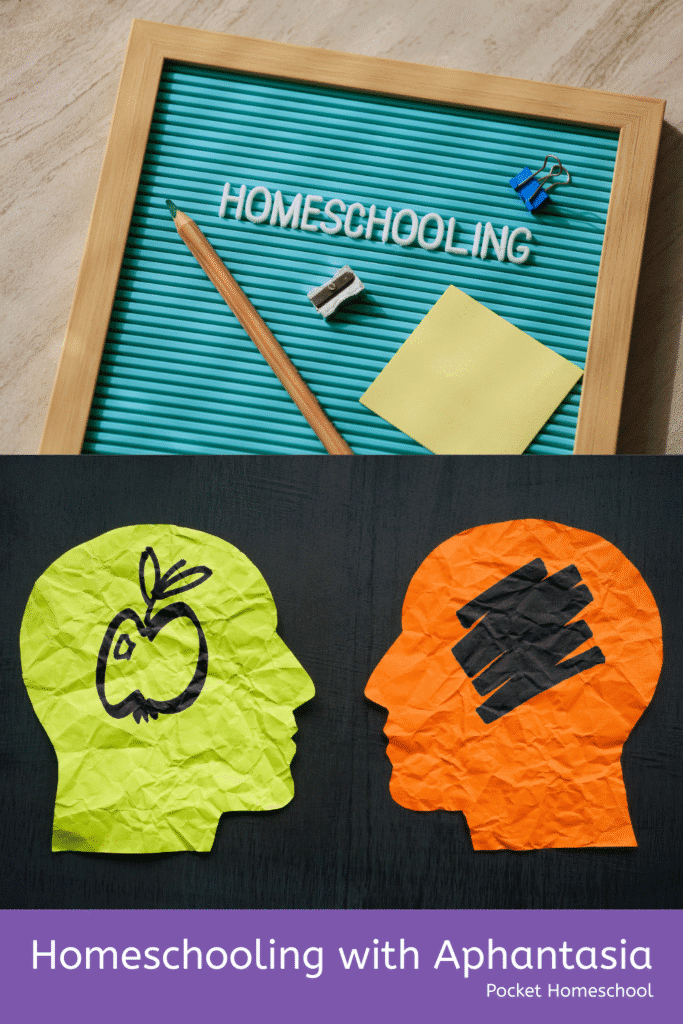
Understanding your kid’s brain
Just like some people are tall and some people are short, some people see images and some people don’t. Some people might choose to see that as a deficit, but I merely choose to see it as a difference. Right now, we think aphantasia is a relatively small portion of the population, but I don’t believe we have an accurate picture of how many people have aphantasia. In my experience talking with people, it’s not something you know until you know.
Asking a person with aphantasia to visualize may result in boredom or frustration for them. They also may be confused by such a request. They may not realize that visualizing in your mind actually is seeing a picture. If a child is frustrated by activities that tell them to visualize, it may be that they literally can’t. Ask your child questions about what they experience in their head – but be prepared that it may be hard for them to answer. Even as an adult, it’s hard for me to explain how my brain works.
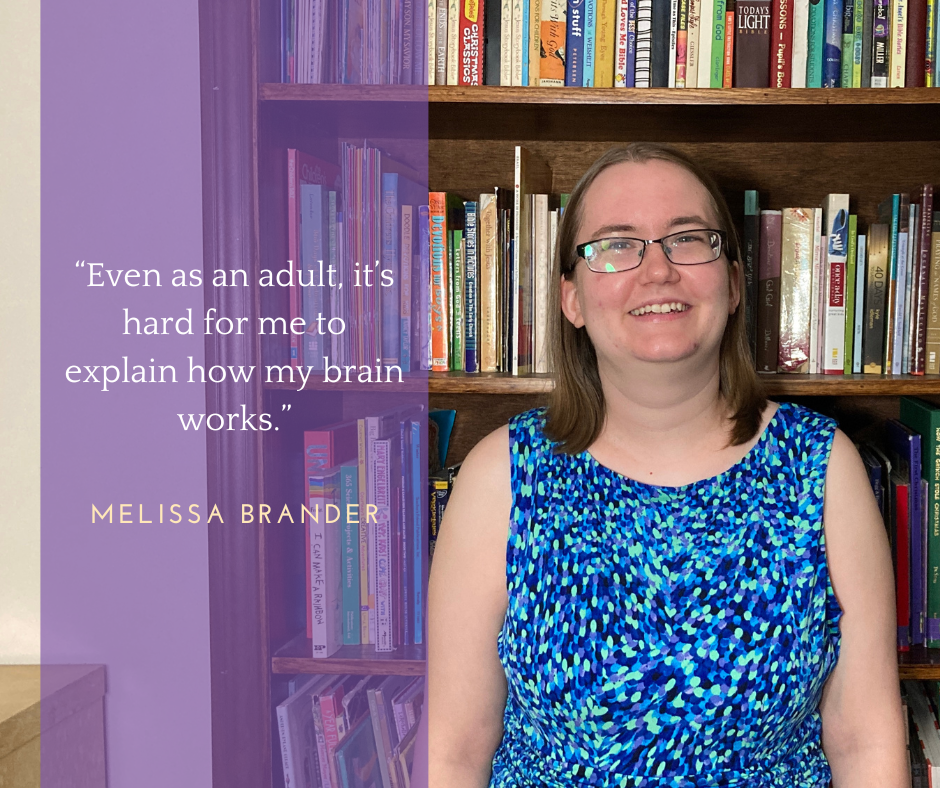
Different brains
Like I said before, people who do think in pictures sometimes think of aphantasia as a deficiency. However, I think of it as just a difference and, in fact, it can be a tremendous strength. Thinking differently can bring forward new ideas that someone else may not have thought of.
Brains are so complex and multifaceted that it often amazes me that we think of anything about brains as being normal. It’s like having a normal work of art or a normal book. What kind of book is normal? Fantasy? Historical Fiction? Fantastical Historical Fiction? Just like there are many genres of books and even books that cross genre categories, there are many types of brains and many ways to think.
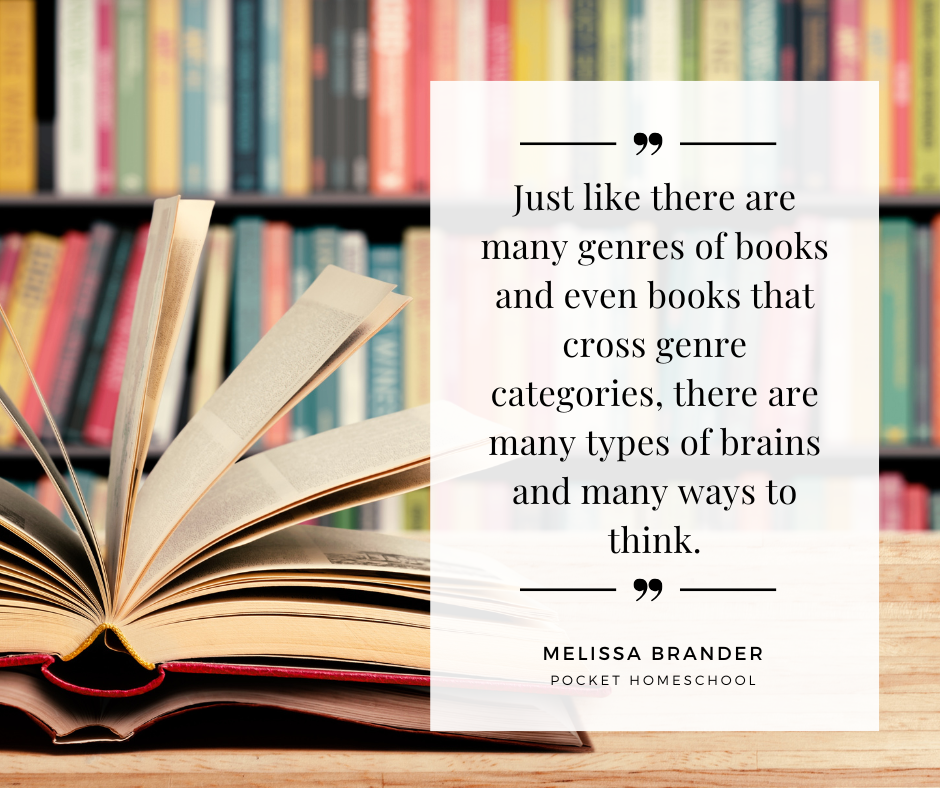
Imagination, creativity, and art with aphantasia
Sometimes people think that you can’t be imaginative or creative with aphantasia, but this is not at all true. You can be plenty imaginative and creative – it just might look different.
For example, my imagination works in words. So for me, having a large vocabulary has been an important skill. That is because the more words I have the greater ability I have to describe how I imagine something.
Creativity can also look a little different for me. When I’m creating art, I don’t have the ability in my head to visualize how I want it to turn out. This often means I will need to experiment more in my art creation to see how things look together, especially colors. If this is the case for your child too, they may appreciate a scrap piece of paper where they can try things before they full commit to putting it in their art.
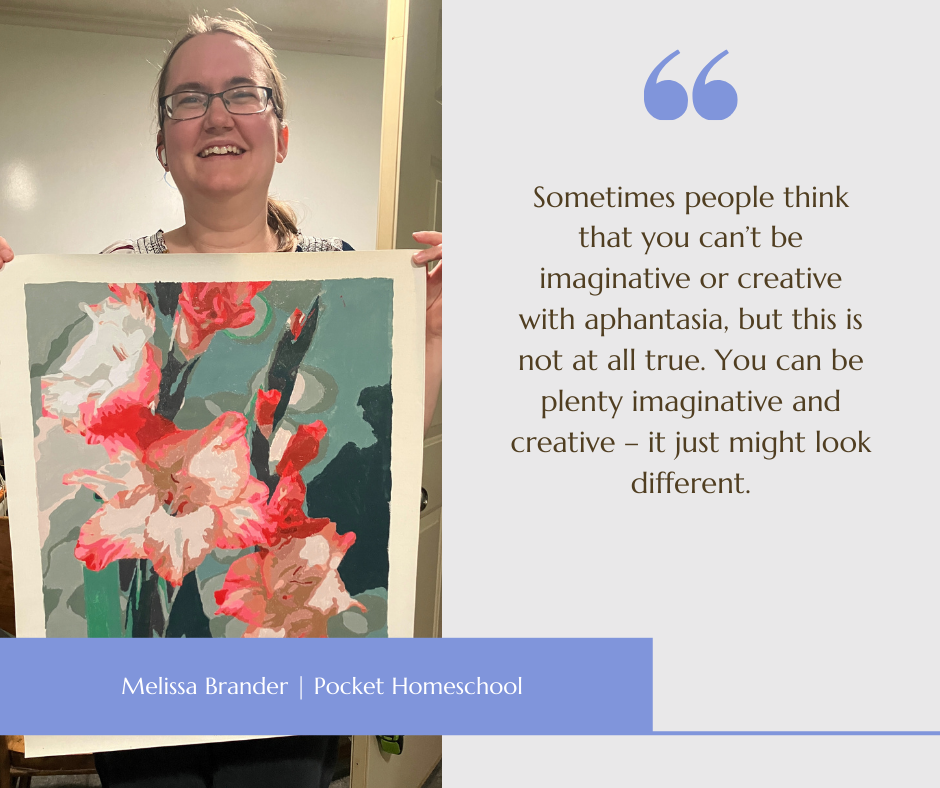
Reading with Aphantasia
A common question I see in aphantasia groups on Facebook has to do with reading. The question is always some variation of this: “Is reading unenjoyable for you because of your aphantasia?”
At least for me, this answer is a resounding no. I love to read and read over 70 books last year. What many people love about reading is that it’s like a movie in their head, so sometimes it is hard for people to imagine enjoying reading without that movie. However for me, the excitement in a book is rarely in the cool action things, but in the characters’ inner lives – their thoughts and emotions while they experience everything. I connect with the words because I think almost exclusively in words.
Some kids with aphantasia may find graphic novels more appealing as it helps them to view the scene in a way their brains cannot. My friend Randi over at Peanut Butter Fish Lessons wrote a post about visualizing as a reading strategy – and if your kid can’t visualize, there are still other ways to support this that she mentions, like having them act it out.
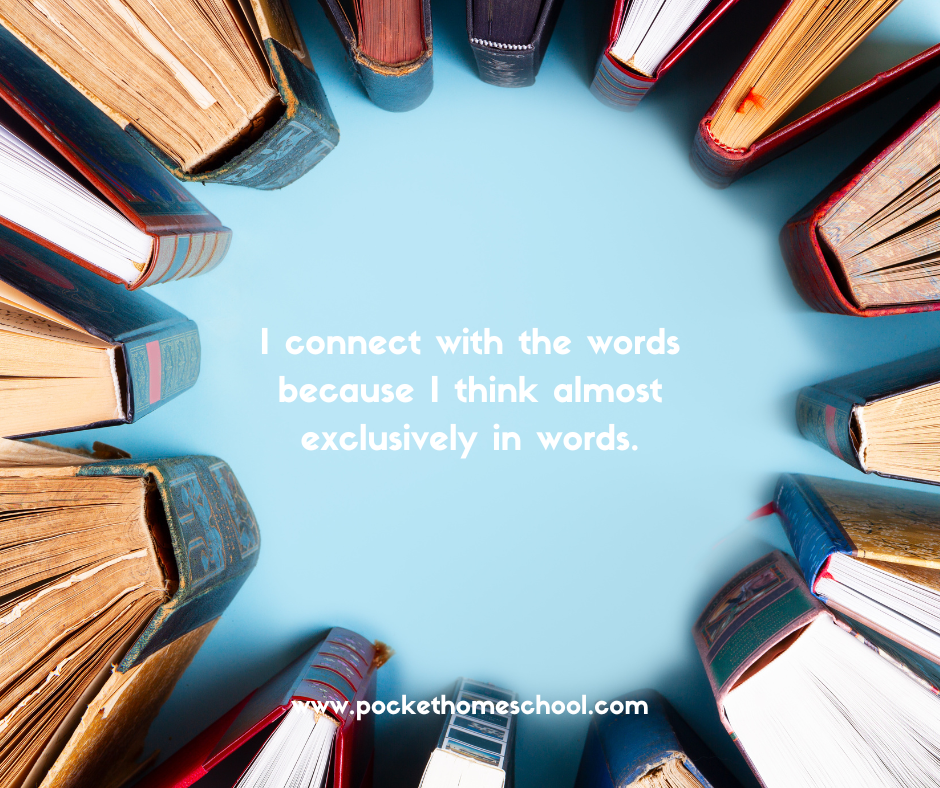
Does aphantasia make math harder?
I want to stress again that I am not an expert in aphantasia. My experience with math and aphantasia may not be universal.
For myself, I am quite capable of doing math. However, I do sometimes struggle a little bit with mental math and find it hard to hold onto a lot of numbers in my head. (And words too – it’s much easier for me to spell on paper than out loud.) I much prefer to do math on paper so I don’t have to try to hold all those numbers in my head through multiple steps.
If you have a child with aphantasia who seems to struggle with math, make sure you have tools available to them like a whiteboard and dry erase markers or pencils and paper, as well as manipulatives. Seeing a concept demonstrated with a manipulative can really help make it click.
Accommodations for Aphantasia
The biggest accommodation for aphantasia that I can think of is just to provide visuals in some way. Even though the idea of learning styles is a myth, it can still be helpful for students who can’t visualize to have visuals in front of them. Models with parts that can be taken apart to show how they go together can also be helpful in some areas.
One of the biggest perks to homeschooling is the ability to adapt and accommodate for our children, so just being open to what your child might need will help you to figure out the best accommodations to help them.
Aphantasia and Memory
The connection between aphantasia and memory, like other parts of aphantasia, is not yet well understood. However, this is what I can tell you. You can still remember things as someone with aphantasia. We just remember differently.
Conclusion
Because aphantasia is not well studied or understood, we don’t have a complete grasp yet on how it affects learning. However, it is absolutely possible to support your unique child in your homeschool if you are willing to think outside the box and provide accommodations to assist them as needed.
Do you or your child experience aphantasia? How does it affect your homeschool? Leave a comment below!

Leave a Reply